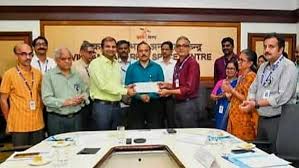
From Asharikandi to ISRO: Assam’s Terracotta Craft Drives Breakthrough in Space Ceramic Technology

 :
| Updated On: 05-Aug-2025 @ 3:03 pm
:
| Updated On: 05-Aug-2025 @ 3:03 pmSHARE
This article celebrates the remarkable fusion of traditional terracotta craftsmanship and cutting-edge scientific research that has led to a breakthrough in space ceramic technology, spotlighting Dr. Palas Haldar’s pioneering work and the historic village of Asharikandi in Assam.
Dr. Palas Haldar, a distinguished material scientist, received high honors from the Director of the Indian Space Research Organisation (ISRO) for his innovative research on strategic ceramic materials essential for space missions. These ceramics are critical components of spacecraft thermal protection systems, designed to withstand extreme temperatures above 1600°C during atmospheric re-entry. The accolade recognizes not only his individual achievement but also the collaborative effort that connects science with cultural heritage.
Central to Dr. Haldar’s research journey was Asharikandi, a renowned terracotta-producing village in Assam’s Dhubri district. Between 2018 and 2021, he worked closely with local artisans to transform the traditional craft cluster into an informal research laboratory. This partnership resulted in the introduction of glazed pottery—essentially advanced ceramics—integrated with Asharikandi’s time-honored terracotta techniques. This blend of ancient art and modern science paved the way for new ceramic compositions tailored to the stringent demands of space exploration.
Binoy Bhattacharjee, Director of the North East Craft and Rural Development Organization (NECARDO) and Chairman of the Geographical Indication (GI) tag team for Asharikandi terracotta, expressed immense pride in this collaboration. He highlighted how Dr. Haldar’s efforts introduced a new scientific dimension to traditional terracotta craftsmanship, elevating the craft to a position of national importance within India’s space program. This achievement brings honor both to the artisans preserving age-old traditions and to scientists advancing national space capabilities.
Bhattacharjee emphasized that this accomplishment transcends individual recognition; it symbolizes Assam’s rich cultural heritage gaining renewed significance through modern scientific applications. It exemplifies how interdisciplinary collaboration—melding rural artistry with high-tech innovation—can yield extraordinary outcomes. The story vividly illustrates “clay meeting cosmos,” where the very hands shaping earthen idols have contributed to creating materials that protect India’s space ambitions.
For the artisans of Asharikandi, this breakthrough offers a profound sense of pride. While continuing their daily work of molding clay, they do so knowing that their craft now resonates beyond earthly bounds and plays a role in humanity’s ventures into outer space.
In summary, Dr. Palas Haldar’s research not only advanced space-grade ceramic technology but also revitalized a traditional art form by integrating local knowledge with scientific innovation. The partnership between Asharikandi’s terracotta artisans and ISRO scientists serves as a powerful model of how heritage crafts can contribute to cutting-edge technological progress, underscoring the potential for cultural traditions to inspire and support modern scientific achievements. This synergy enriches India’s cultural narrative and technological prowess alike, marking a milestone where the past and future meet in the service of exploration and innovation.